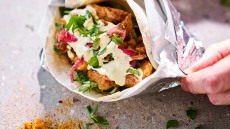Sugar contamination stings honey imports in Europe

As the trend for ‘natural’ sweeteners continues to rise, so too do honey prices. Globally, honey prices are at their highest levels in years.
At the same time, EU honey production is unable to keep up with domestic demand, prompting a substantial amount of honey to be imported from third countries.
These factors – together with the difficulty of detecting honey contamination when it occurs – is creating somewhat of a perfect storm for food fraud. According to tests conducted by the Commission, dishonest business operators are taking advantage by extending honey with sugar syrups for financial gain.
Almost half of honey samples suspected of non-compliance
Between 2021 and 2022, the Commission sought to assess the prevalence of honey on the market that had been adulterated with sugars. A total of 320 samples were collected at the borders of 16 Member States (along with Norway and Switzerland).
What is honey?
In the EU, Council Directive 2001/110/EC, Annex 1, point 1 defines honey as: "the natural sweet substance produced by Apis mellifera bees from the nectar of plants or from secretions of living parts of plants or excretions of plant-sucking insects on the living parts of plant, which the bees collect, transform by combining with specific substances of their own, deposit, dehydrate, store and leave in honeycombs to ripen and mature".
Alarmingly, of the 320 samples, 147 (46%) were suspected of sugar adulteration.
China was found to have the highest absolute number of suspicious consignments (74%), whereas Turkey had the highest relative proportion of suspicious samples (93%).
It was the UK, however that had an even higher suspicion rate with 100% of samples (10 out of 10) suspected of non-compliance. The Commission did note it is ‘likely’ these honey samples were produced in other countries and further blended in the UK before its re-export to the EU.
The overall rate of non-compliance (46%) is significantly higher than the last tests conducted on EU origin honey between 2015-17 (14%), but this time around the Joint Research Centre (JRC) applied a different set of methods with improved detection capability.
Operators in a sticky situation
As part of the Commission’s ‘From the Hives’ assessment, European Anti-Fraud Office (OLAF) carried out investigations at places of import, processing, blending, and packing.
Malpractices identified included the use of sugar syrups to adulterate honey and lower its price; analysis in accredited laboratories to adapt honey/sugar blends to elude possible detection; use of additives and colourings to adulterate the true honey botanical source; and masking of the true geographical origin of honey by forging traceability information and removing pollens.
Findings suggest more than half (57%) of the operators had exported honey consignments suspicious of being adulterated with extraneous sugars and 66% had imported at least one suspicious consignment.
A further 44 EU operators have been investigated and seven have been sanctioned for honey adulteration with extraneous sugars.
How much sugar is allowed in honey?
In the EU, Council Directive 2001/110/EC relating to honey establishes two requirements for the sugar content in honey:
- the sum of fructose and glucose content shall not be less than 60g/100g for blossom honey, and not less than 45g/100g for honeydew honey and related blends;
- sucrose content shall not exceed 5g/100g. However higher limits have been established for several specific botanical sources such as French honeysuckle, eucalyptus and lavender.
Will the EU ban these imports?
The Commission is hesitant to ban imports, since half of the honey tested appeared to be authentic. Instead, it plans to tackle the unfair behaviours and ban operators.
“To do that, a validated and accredited method to detect the adulterated honey is necessary for official controls and subsequent sanctions to take place,” noted the Commission. “A list of third country establishments aiming at exporting honey to the EU would allow to target reinforced controls at EU borders, as necessary. “This listing of third country establishments go hand-in-hand with their delisting in case of repeated non-compliances.”
De-listing a third country due to the number of non-compliant consignments would not be excluded, however. It would effectively end the import of adulterated honey from a particular third country, but ‘would remain a last measure of report’.















